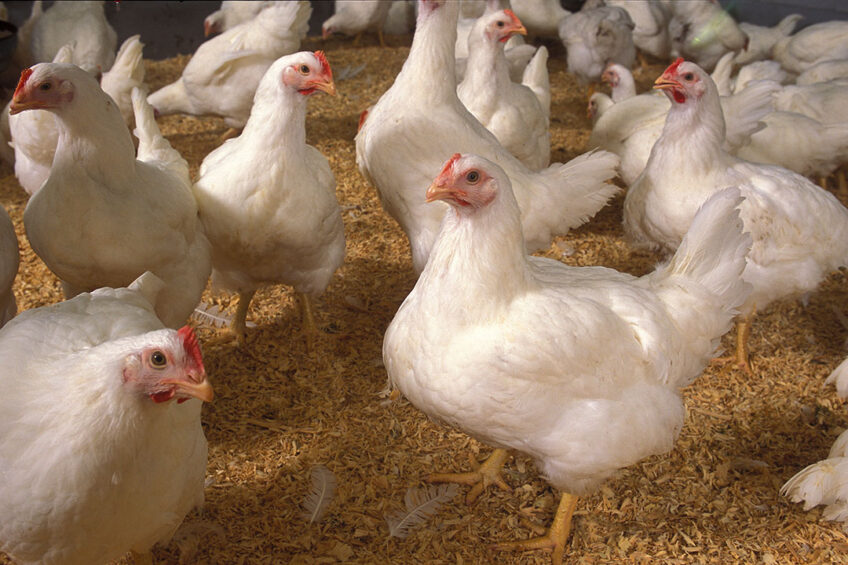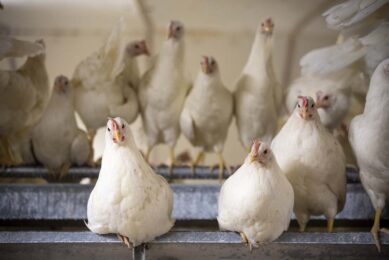Functional amino acids to reduce the use of antibiotics

Recent scientific discoveries around the roles of functional amino acids and their synergies provide evidence that these nutrients increase the resilience of the gut which can translate into reduced use of antibiotics monogastric animals.
Clear associations between the use of certain antibiotics in farm animals and the occurrence of antimicrobial resistance in humans has been shown. This demonstrates that the reduced use of antibiotics on farm is crucial to limit the outbreak of antimicrobial resistant bacteria both in humans and animals. Currently, the use of antibiotics is already decreasing. Indeed, sales of veterinary antibiotics have shrank by 34% between 2011 and 2018 in Europe (ESVAC, 2020). However, efforts must be carried out to reach a minimal level of use. Furthermore, this decrease in antibiotic use needs to echo the increasing consumer demand for animal products raised without them. In this context, research has focused on the development of different strategies to improve animals health while maintaining or improving performance: biosecurity, farm management, vaccination and nutritional strategies.
Amino acids to support gut health
Among the nutritional strategies, the decrease in dietary crude protein combined with the inclusion of feed-grade amino acids is a proven solution to reduce pathogen pressure on the farm. Indeed, feeding low protein diet lowers pH both in the stomach and intestine and reduces substrate availability for pathogenic bacteria to proliferate or to produce harmful metabolites. Feed-grade amino acids are more than a lever to decrease the crude protein level in the diet. It is now time to consider their functions as precursors of molecules and as signalling molecules in animal nutrition to optimise gut health. Indeed, it has been shown that they can directly support or restore the four pillars of gut health. The effects of arginine, glutamine, threonine and cystine on these pillars are illustrated in Figure 1. Therefore, supplementation of functional amino acids can prepare the gut to face a challenge or help the gut to recover from a challenge, increasing its resilience. This can translate into a reduction of the use of antibiotics.
Figure 1 – Arginine, glutamine, threonine and cystine can support the four pillars of gut health.
Glutamine: A pivotal amino acid
Glutamine is a conditionally essential amino acid and a major energy source for rapidly dividing cells including enterocytes and lymphocytes. During periods of challenge, the demand for glutamine can exceed its supply due to lesser feed intake and digestibility. In this context, supplementation of feed-grade L-glutamine can translate into consistent improvement of gut integrity.
Several studies have reported that supplementing swine nursery diets with 0.2% L-glutamine can improve growth performance at a similar or greater level when compared with dietary antibiotics (chlortetracycline + tiamulin). An experiment in broilers has shown a similar result, indeed, broiler chickens fed a corn-based diet supplemented with 1% of L-glutamine exhibited higher performance than chickens treated with bacitracin both in challenged and unchallenged conditions. It is worth noticing that in the addition to benefits in terms of performance, glutamine supplementation was consistently associated with an improvement of gut morphology, an increase in circulating immunoglobulins and a reduction of inflammation markers.
Synergistic amino acid solutions
Studies show there is little doubt concerning the efficiency of L-glutamine supplementation to improve gut health. However, all experiments tested glutamine at high doses (from 0.2 to 2%) preventing this strategy to be implemented on the field. Synergistic solutions combining glutamine with other functional amino acids are promising and has been shown to:
- increase the efficiency of the solution
- decrease the dose of efficiency
- increase the reproducibility of the results.
For example, we have shown in 2 different commercial experiments that the supplementation of 0.1% of an amino acid-based solution containing L-glutamine, L-cystine and L-arginine can significantly reduce by one third the use of individual antibiotic treatments in post-weaning piglets. In addition, in a recent study, we observed that the supplementation of a similar solution (Inneus piglets for gut health) during the pre-starter phase could reduce diarrhoea score and improve growth of the piglets. In broiler chickens, we demonstrated that the supplementation of 0.1% of an amino acid-based solution containing L-glutamine, L-threonine and L-arginine (Inneus chickens for gut health) could improve the performance of chickens challenged with coccidiosis at the same level as chickens treated with an anticoccidial drug (Figure 2). Similar effects could be observed in necrotic enteritis challenged chickens (Figure 2).
Figure 2 – Inneus supplementation is efficient to promote performance of challenged broilers.

Complementary approaches for success
Reducing antibiotic use down to zero is a long and complex journey. The growing portfolio of feed-grade amino acids now allows, on one hand, to decrease dietary crude protein level efficiently and reduce the excess of undigested protein and, on the other hand, to supplement the adequate nutrients to boost particular physiological functions such as gut health. We believe these complementary nutritional strategies should be combined and are efficient tools in a context of antibiotics use reduction.
Reference are available on request.
Author:
Tristan Chalvon-Demersay, Innovation and New Products Manager at Metex Noovistago
 Beheer
Beheer







 WP Admin
WP Admin  Bewerk bericht
Bewerk bericht